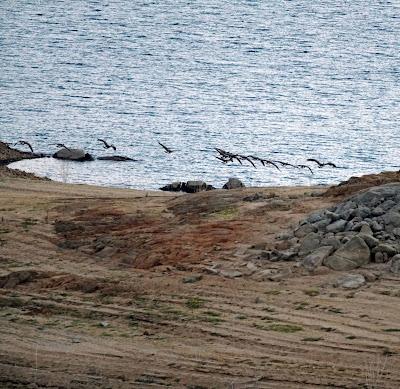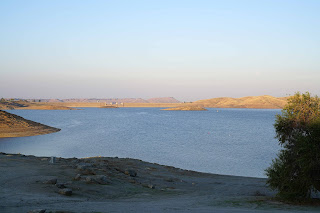Dale Matson
Click On Photographs To Enlarge
Bald Eagle
I
have a previous article about swimming at Millerton Lake that also provides
background information about the half million-acre foot capacity reservoir fed
by the San Joaquin River. Millerton Lake is about 15 miles northeast of Fresno
California.
Although I have never water skied or “wet a line” at
Millerton Lake (as the fishermen say), There is much to explore around the
lake. There are also lots of established campsites and an additional boat
launch area on the Madera County side of the lake. Lake is about 50% capacity and being drawn down to accommodate spring snow melt in the Sierra Nevada.
I
recently visited the lake for photographs on three separate days and took photographs
from the southwest end near the historic Millerton Courthouse, The north shore
in Madera County and from the northeast on a portion of the San Joaquin River
Trail. I turned around after only a mile or so of steep climbing from the Fine
Gold day use area to Pincushion Peak. The Fine Gold day use area is reached after a 6 mile drive to a dead end on Sky Harbor Drive near the Table Mountain Casino.The lake is surrounded by California State land and is a
state park.
The
first day had a sunrise start and a surprise visit from a cooperative Bald
Eagle who waited for me to change to a bigger lens on my camera, take some
photographs and then fly away. There are trails galore around Millerton Lake
and this time of year the Rattle Snakes are less in evidence. Although I have
seen several Bobcats over the years, I have never seen a Mountain Lion but I’m
sure they have seen me.
My
second day was spent on the Madera County side looking for a Bald Eagle’s nest
to no avail but provided opportunities for photograph the lake from a different
perspective.
The
third day I spent on the San Joaquin River trail climbing above the lake and later I was back by
the Courthouse. I watched a man Kite Surfing the cold waters in a wet suit. We
had our final swim of the season a week ago and the water temperature was in
the low 60’s.
Here
are the photographs taken with my Sony A7R2, Zeiss Loxia 50mm f2, adapted Canon
400mm f5.6, and Sony Fe 70-300mm lenses. My best and brightest day was my 3rd
day.
From Pincushion Mountain
Millerton Courthouse
Canada Geese
Full View Of The Dam
Views From The Madera County Side
Views Along Sky Harbor Road
Looking Across To The Madera Side At A Lovely Home
Back To The Courthouse Area









































